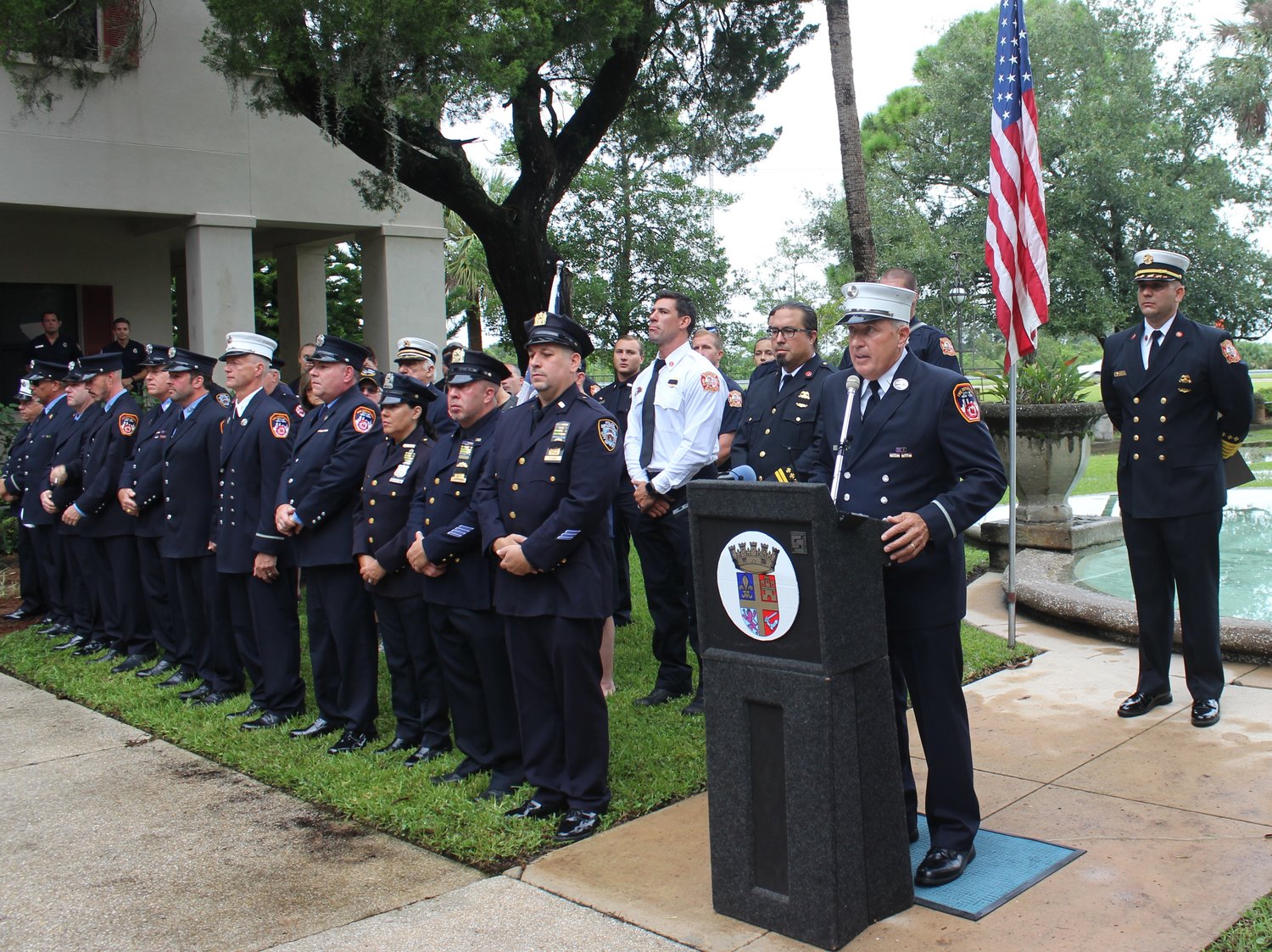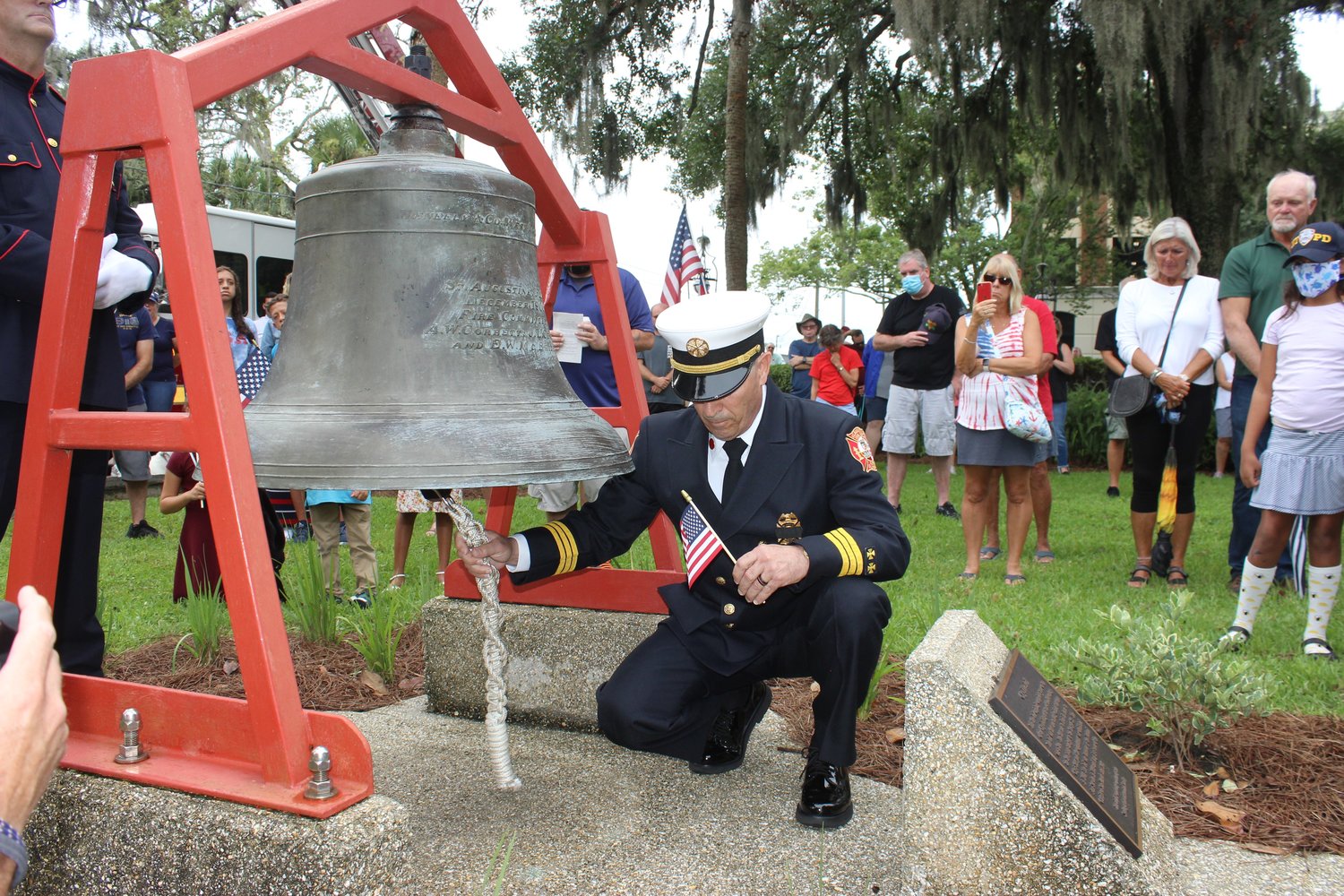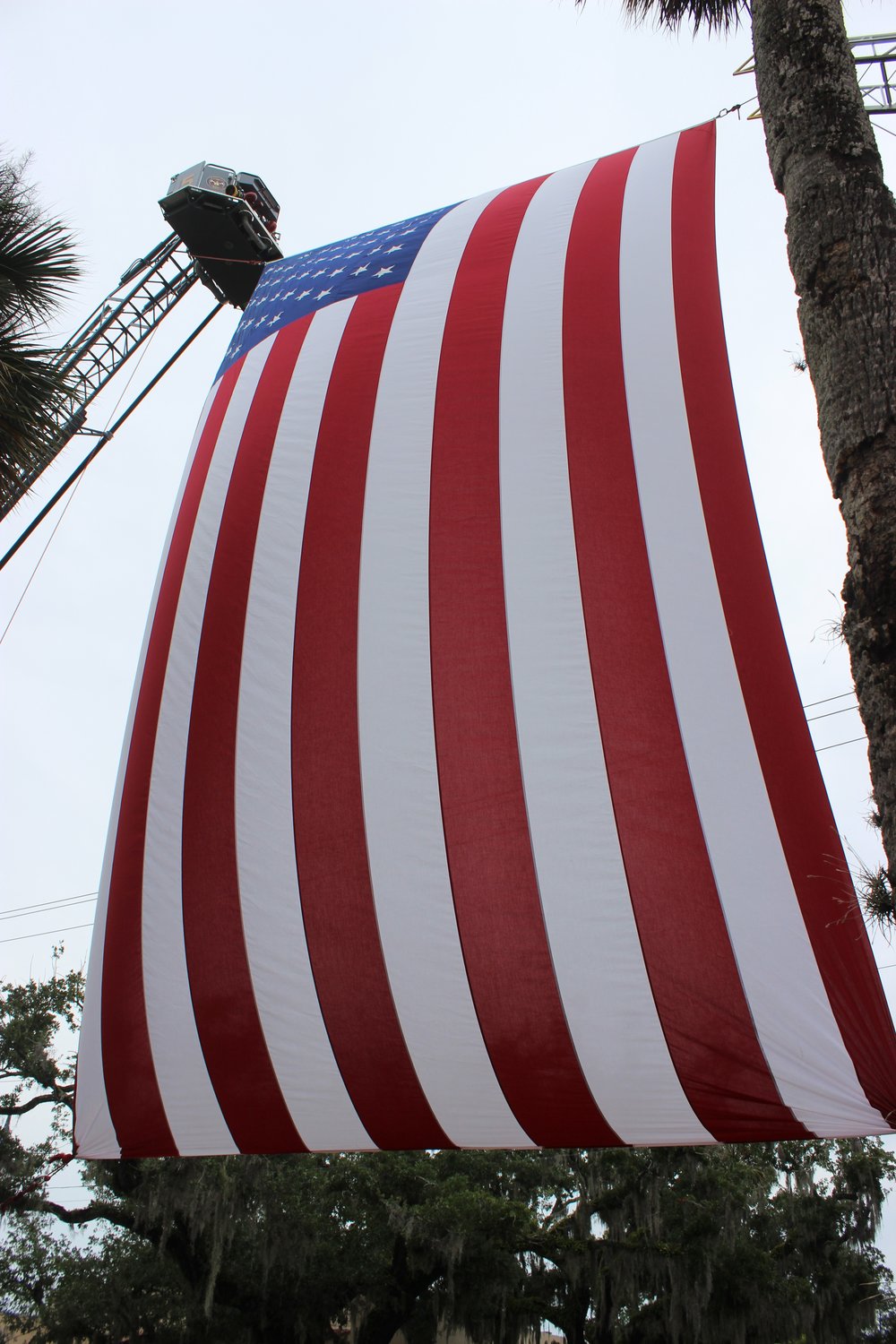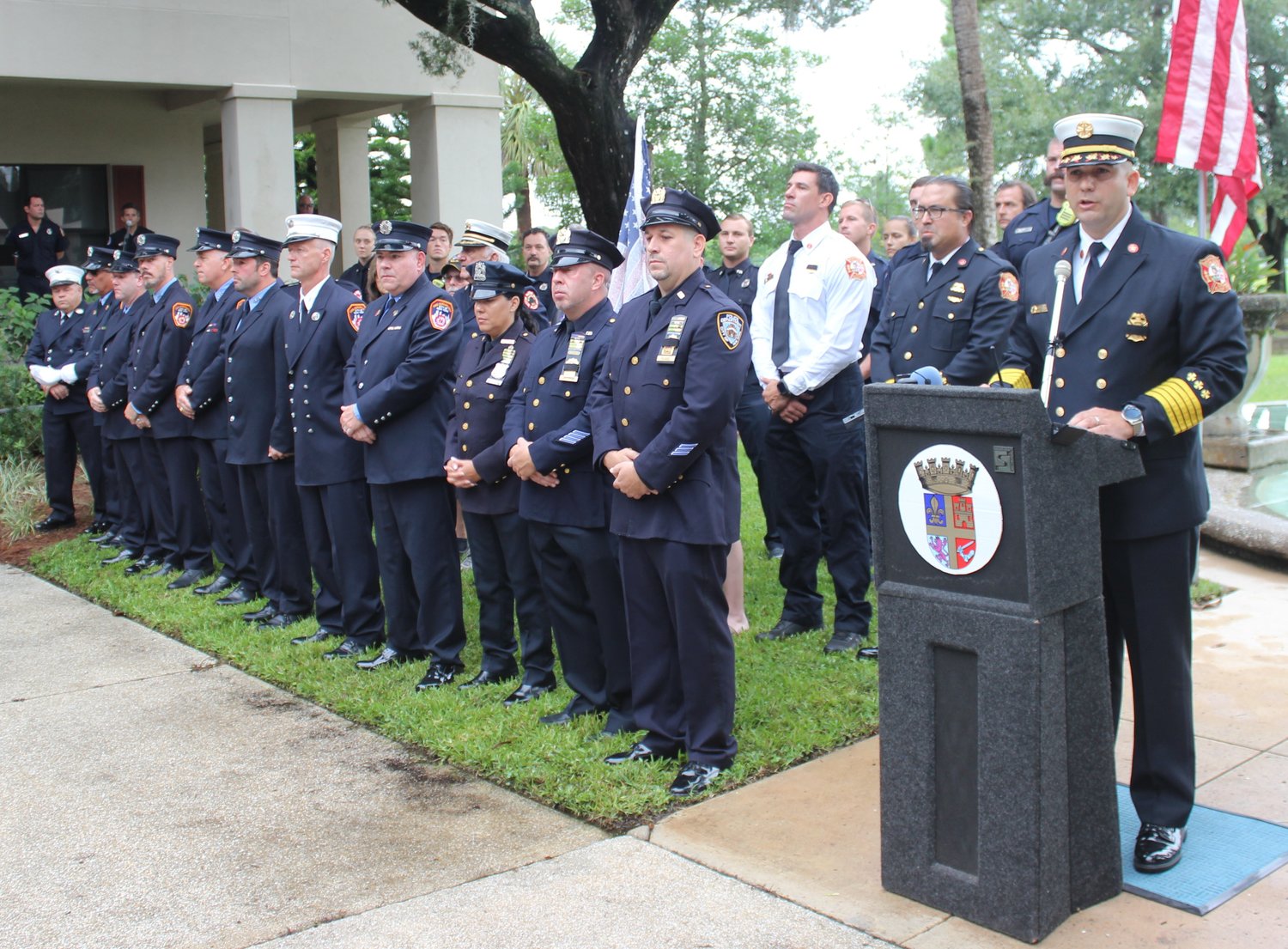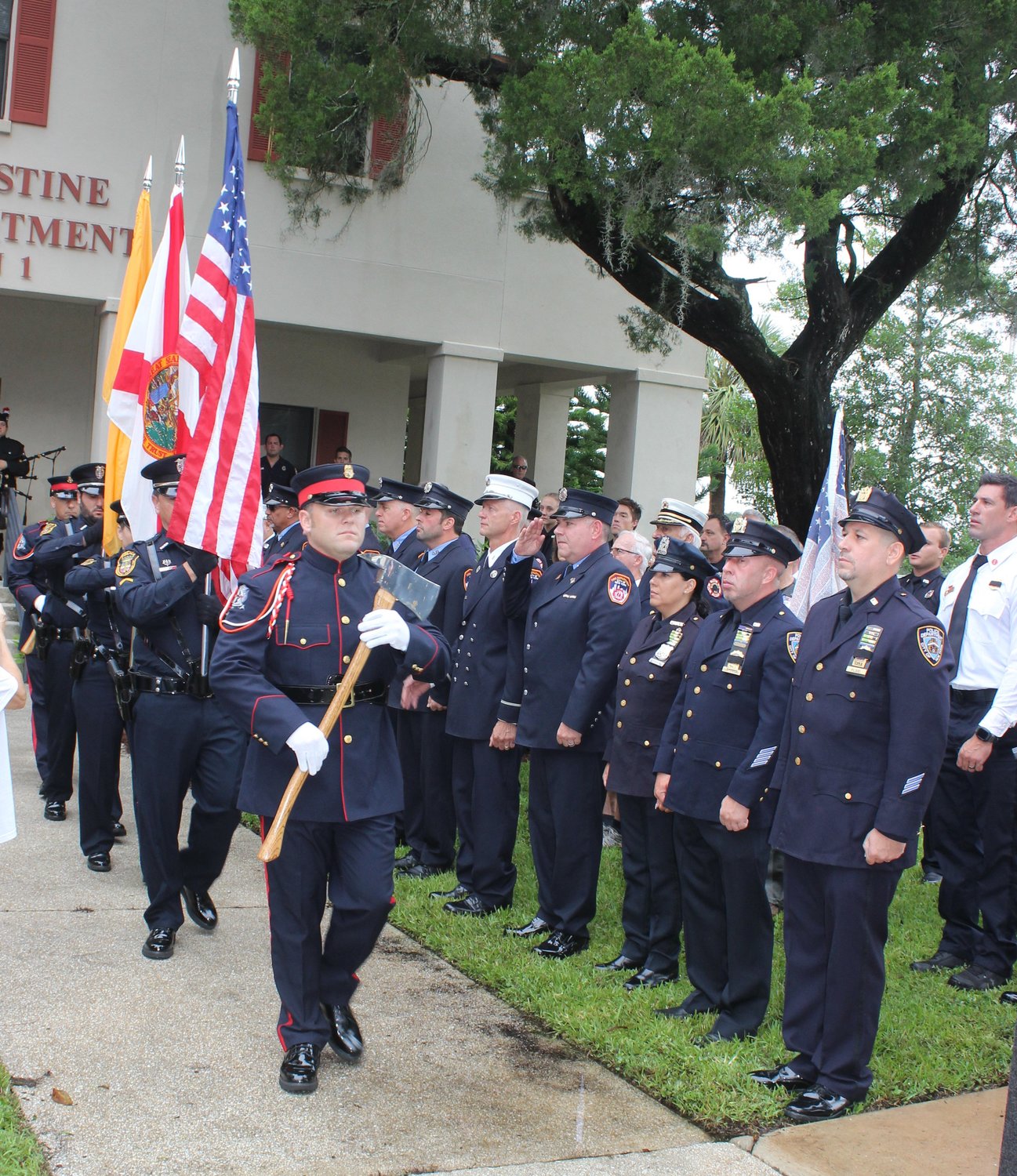St. Augustine marks 20th anniversary of Sept. 11, 2001, terrorist attacks
Lt. Robert Aponte of the New York City Fire Department was just finishing up a 6 p.m.-to-9 a.m. shift on the morning of Sept. 11, 2001. He was in the kitchen of his fire station in Queens, drinking coffee, eating a bagel and joking with his fellow firefighters when a voice came over the intercom with news that today sounds understated.
“A member of our house watch who was watching TV said, ‘Put the TV on. We’ve got a problem at the World Trade Center,’” Aponte recalled.
The broadcast showed a small hole in the North Tower. Aponte thought maybe a wayward pilot had crashed into it.
But then, the off-duty firefighters of Engine Company 320 watched as a commercial airliner struck the South Tower. They switched the firehouse radio to the Manhattan frequency.
“One of the first transmissions that I heard – that I’ll remember forever – was a member who got on the radio and said, ‘Manhattan, we have jumpers down,’” Aponte said.
The retired firefighter gave his account of that day 20 years ago during St. Augustine’s Ceremony of Remembrance, held Saturday, Sept. 11, at the city’s main fire station.
Hundreds attended the ceremony, which included remarks by St. Augustine Fire Chief Carlos Aviles, an invocation by the Rev. Matt Marino of Trinity Parish and a musical presentation. A minute of silence was timed to coincide with the exact moment the first plane hit the first tower.
In addition, a “Survivor Tree” sapling planted in front of the fire station was dedicated. It is a direct descendent of a single surviving Callery pear tree discovered at Ground Zero in October 2001. The tree was severely damaged but rehabilitated by the New York City Department of Parks.
Also dedicated was a piece of steel recovered from the World Trade Center site. It was donated by retired New York City firefighters James Svendsen and John Westfield.
The ceremony concluded with “Striking the Four 5’s.” Prevention Chief and Fire Marshal Bob Growick rang the local department’s 1900 fire bell in four intervals of five rings each. This tradition signifies the last alarm of a firefighter.
In his presentation, Aponte recalled how firefighters were told to remain on duty and those at home were told to report to duty. Known as a citywide recall, it was a first for Aponte in his time with the department.
He was told to report to the former Shea Stadium, a drive he found “real eerie,” as there were very few cars on the road – not something you’d see in New York, where there was always traffic, even at 3 a.m.
From Shea Stadium, he was told to take a bus downtown. There was a lot of chatter among those on the bus, but that would soon change.
“At the top of the Triborough Bridge, the bus became dead silent,” Aponte recalled. “Sitting in the front, I realized right away what it was. From the Triborough Bridge, you normally could see the whole New York City skyline. We realized at that point the second tower was down. The Trade Center was gone.”
Downtown, Aponte took note of the blue sky overhead. The wind was out of the north, keeping the dust and smoke away from the arriving firefighters.
Then, he said, “a commercial airliner flew over us with two fighter jets flanking each wing. I looked up at the fighter jets and that plane and said, ‘We are at war.’”
In the staging area at Stuyvesant High School, he encountered a firefighter he knew who was just returning from the World Trade Center site. The man described seeing people jumping to their deaths. He couldn’t see the faces of the women, because their dresses blew across their faces. But the men were another matter.
“Bob,” he said to Aponte, “the men, they stared at me the whole way down, and their ties were in between their eyes. I’ll never forget that.”
He’d watched as these people hit the pavement.
Not all encounters that day were so grim. Aponte recalled looking over to see movie actor Burt Young, who played Paulie in the “Rocky” films.
“Looked like he was right off the set of ‘Rocky,’” Aponte said. “The baggy pants, the baggy shirt, the derby he had on, the curly hair from under his derby, unshaven and mumbling, ‘What’s goin’ on, fellas?’”
Aponte said he offered the firefighters a drink from a bottle he carried but they declined.
“I often today wonder,” Aponte said, “did he purposely come down in his act as Paulie from ‘Rocky’ that we’d all recognize, or was that really Burt Young?’”
The firefighters standing by were soon needed. As they watched, Building 7 collapsed. Aponte never forgot how the 40-story building simply “pancaked” down.
For the next eight-to-nine hours, Aponte worked with a team trying to collect all the spare air canisters they could find from every apparatus that wasn’t buried. These canisters would be an improvement over the thin paper masks worn by firefighters working the scene.
Aponte remembered the moment he finally emerged from his mental fog and realized just what had happened that morning.
“I was walking between city hall and the Trade Center, and I found myself on the street,” he said. “I was all alone, and I stopped. And I looked. I was in a canyon of buildings, and hanging off the sides of those buildings was all the debris. The papers, whatever material there was. The dust.”
Finally, he was able to go home to his wife and children. And there, he cried uncontrollably.
“I was crying because I was thinking about all those families of civilians and first responders that were not going to have the moment I was having at that time,” he said.
In the ensuing days, he was assigned to work The Pile, searching for survivors. The smell of decomposition was powerful, and at one point it spoiled his appetite before he could eat some breakfast at a Red Cross tent.
After then-Mayor Rudy Giuliani announced the end of the rescue mission and declared the site a salvage mission, the fire department faced another daunting challenge: funerals for the 343 firefighters.
Fortunately, fire departments from all over the country had reached out and asked how they could help.
“What they did for us, they came and attended our funerals in their full-dress uniforms,” Aponte said. “The funerals I went to, I saw patches from all over the world: Spain, Portugal, Finland, Switzerland, San Francisco, Oregon – you name it, they were there. Because us New York City firefighters, we just couldn’t do them all.”
When the list of all the deceased firefighters was published, Aponte knew 50 of them.
“I was one of the lucky ones that day,” he told those assembled for St. Augustine’s 20th Ceremony of Remembrance.


